King Arthur: A Knight’s Tale is an RPG with turn-based combat and with it’s mostly top-down viewpoint is very in keeping with the rest of the software catalogue of Hungarian developers NeocoreGames given that they made all those Van Helsing games and Warhammer 40,000: Inquisitor. They’re known for combining a solid story with complex game mechanics and that trend continues with King Arthur which came out in 2022 for Windows and has now found its way over to consoles.
Based on the original legend of the story of King Arthur and Knights of the Round Table, this game takes that story and twists it into a darker story. Contrary to the game’s name, you actually play as Mordred who, according to the legend, died in combat fighting King Arthur, who might have been his dad, in a battle that also claimed Arthur’s life. The game starts after that point in the story with Mordred and Arthur both being resurrected by dark magics that curse the land of Avalon.
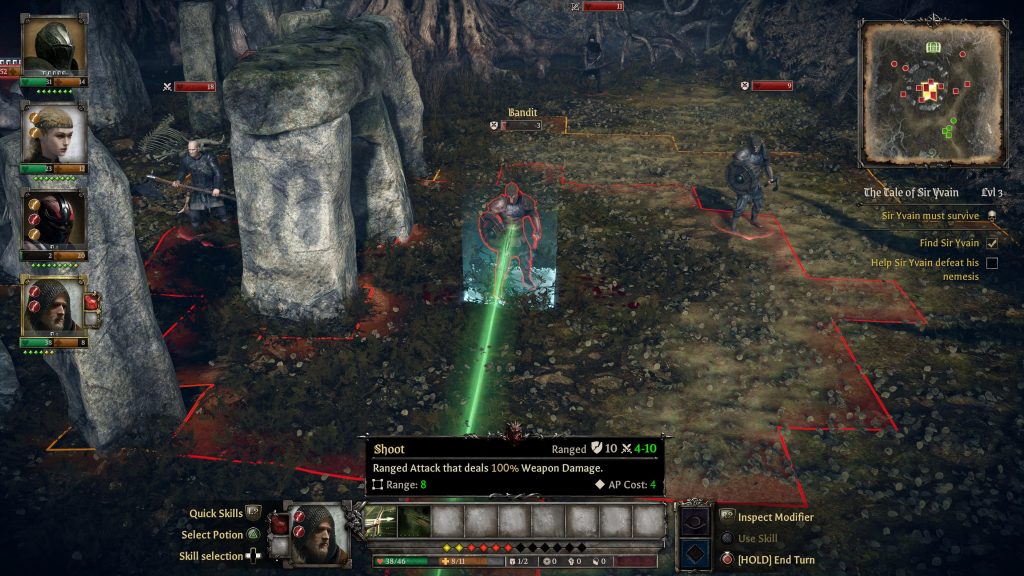 This all sets up the game’s plot where you, as Mordred, have to assemble a new Round Table and fight through a newly corrupted world in order to hunt down and kill Arthur again. The only issue being that he’s now even more powerful and everyone hates you because you’re really a bit of a prick. That’s definitely the oddest thing when starting the game in that everything about this world is grim, yourself included.
This all sets up the game’s plot where you, as Mordred, have to assemble a new Round Table and fight through a newly corrupted world in order to hunt down and kill Arthur again. The only issue being that he’s now even more powerful and everyone hates you because you’re really a bit of a prick. That’s definitely the oddest thing when starting the game in that everything about this world is grim, yourself included.
After a mission to get you acquainted with the basics of adventuring and combat, you soon find yourself back at Camelot with access to several other locations in the world. Now, initially, there’s a lot to take in. You’ve got a pretty deep story with a lot of characters to meet, you’ve got the structure of the adventure itself, a Round Table that will ultimately house a selection of twelve playable characters (who tend to go out in squads of four), the economy and renovation of Camelot itself and, of course, in intricacies of the game’s turn-based combat. It’s all quite a lot to take in but not insurmountable at all given that it’s drip-fed to you somewhat.
But let’s break it down. Generally the game loop is like this. You go to a map screen where you can pick events (which are simple moral choices that define what sort of king you are), side missions and main missions which progress the story through the game’s four acts. Doing any type of mission takes you into a medium-sized closed off play area where you can move freely. You’ll run around in your squad looking for treasure and objectives until you run into a mob of enemies. At this point the game switches to a grid-based arena for the battle.
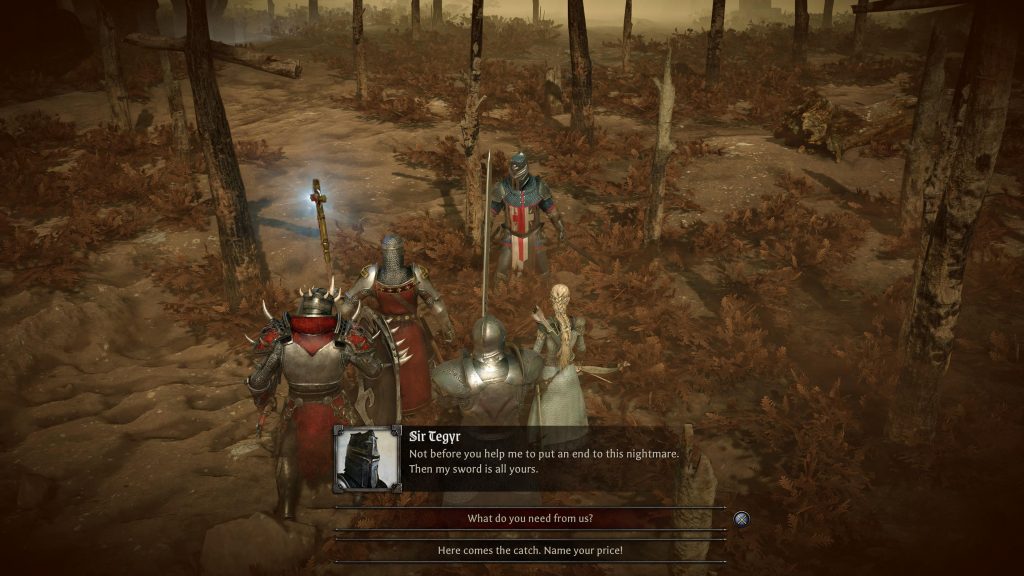 If you’ve played any kind of turn-based strategy game before, you’ll be fairly familiar with how this works. Your squad gets to go first and each character has a set number of action points which can be used for movement or combat. So you’ll be moving them into position and using their remaining points to unleash as many attacks as you can afford. It’s all pretty standard but each playable character tends to have their own abilities and so figuring out how to combine everything efficiently is key.
If you’ve played any kind of turn-based strategy game before, you’ll be fairly familiar with how this works. Your squad gets to go first and each character has a set number of action points which can be used for movement or combat. So you’ll be moving them into position and using their remaining points to unleash as many attacks as you can afford. It’s all pretty standard but each playable character tends to have their own abilities and so figuring out how to combine everything efficiently is key.
So, for example, you might have a marksman character who can hit with fire or poison arrows, potentially without even having to move. This will soften up a target nicely, allowing a magic user to finish them off with a magical blast perhaps. Or letting one of your melee characters do the job. Or you might want to use them to guard an area using the ‘Overwatch’ ability so that enemies get attacked as they rush in. Some characters can freeze enemies, or teleport, or cast ‘Mind Fog’ to make enemies attack each other. Some can drop traps on the floor. When you finally recruit Merlin, he can send in a dragon to do a bit of damage. There are tons of combinations and options and it makes the combat our favourite aspect of the game.
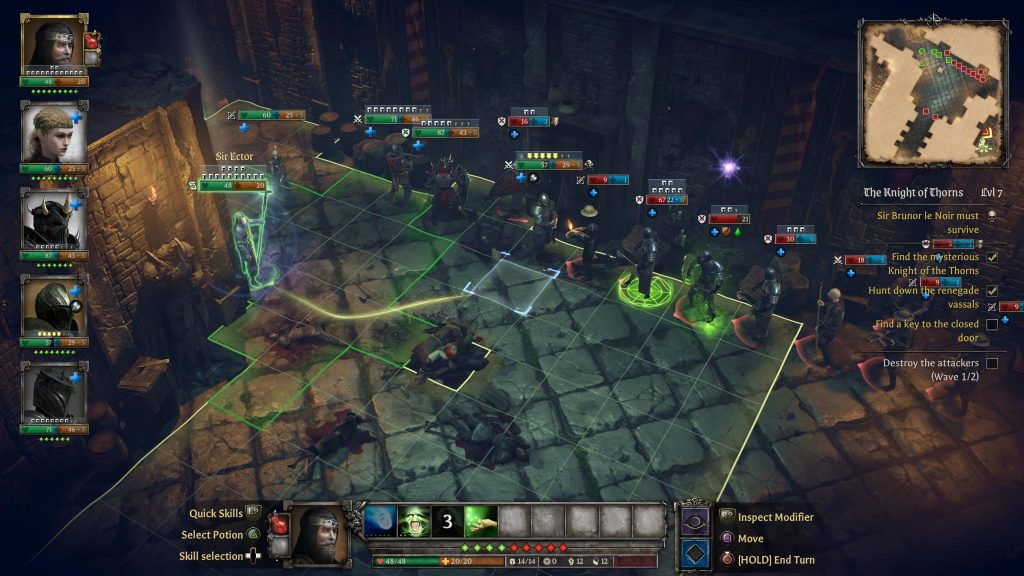 We’ve barely touched the surface of the mechanics there but it did all feel pretty intuitive after a while. Anyway, this isn’t a tutorial, it’s a review! So, once you’re done fighting all the enemies, you’ll finish the mission and will be back at the map screen, looking at the various buildings in Camelot. This is where you’ll need to manage your Round Table members by using their upgrade points to add new skills and passive abilities, manage inventories and figure out what happens to the Knights who don’t go out on the next mission.
We’ve barely touched the surface of the mechanics there but it did all feel pretty intuitive after a while. Anyway, this isn’t a tutorial, it’s a review! So, once you’re done fighting all the enemies, you’ll finish the mission and will be back at the map screen, looking at the various buildings in Camelot. This is where you’ll need to manage your Round Table members by using their upgrade points to add new skills and passive abilities, manage inventories and figure out what happens to the Knights who don’t go out on the next mission.
Again, it sounds fiddly but we quite liked this aspect. Once you’ve unlocked the facilities to do it, managing your team is pretty enjoyable. You can send some to the Cathedral where they can have their injuries healed, this is important as injuries affect your Knights in combat, reducing their movement or defenses and making their attacks weaker. The Hospice is where they can recover Vitality which is their permanent health bar that gets drained during combat if the enemy gets past their armour and hit points. If you’ve got unused healthy Knights sitting around you can send them off for training too so that they aren’t missing out too much of level-up gains.
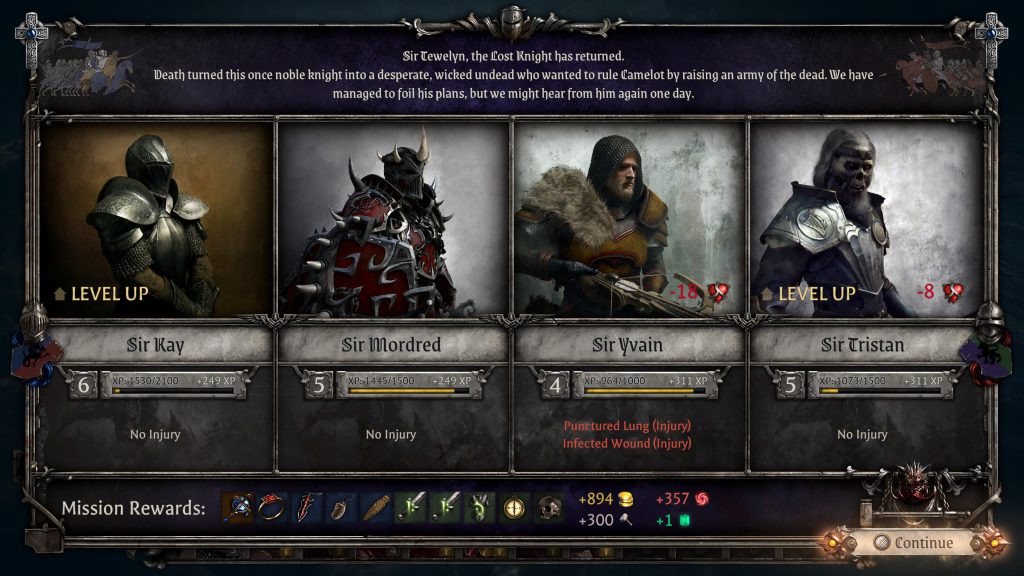 Camelot also has facilities for buying new gear (and blessing the stuff you’ve already got) and other functions and all of it can be upgraded to give you more options and additional passive buffs. Yes, there’s a lot to learn but you won’t have the resources to do it all at once anyway, so you shouldn’t get overwhelmed.
Camelot also has facilities for buying new gear (and blessing the stuff you’ve already got) and other functions and all of it can be upgraded to give you more options and additional passive buffs. Yes, there’s a lot to learn but you won’t have the resources to do it all at once anyway, so you shouldn’t get overwhelmed.
Anyway, that’s pretty much the core game loop right there and the main takeaway from it all is that we really enjoyed the mechanics of it all. One of our favourite ever games here at PlayStation Country is the old 1990 tactical RPG King’s Bounty which shares a lot of similarities to A Knight’s Tale in terms of how you manage your forces and how the combat goes down. After a load of nonsense mobile phone offerings that had the King’s Bounty name, a proper sequel finally came out in 2021. We reviewed King’s Bounty II and, well, it wasn’t really any good. The transition from 2D to 3D really did the game no favours and it was a slow and laborious trudge to get through.
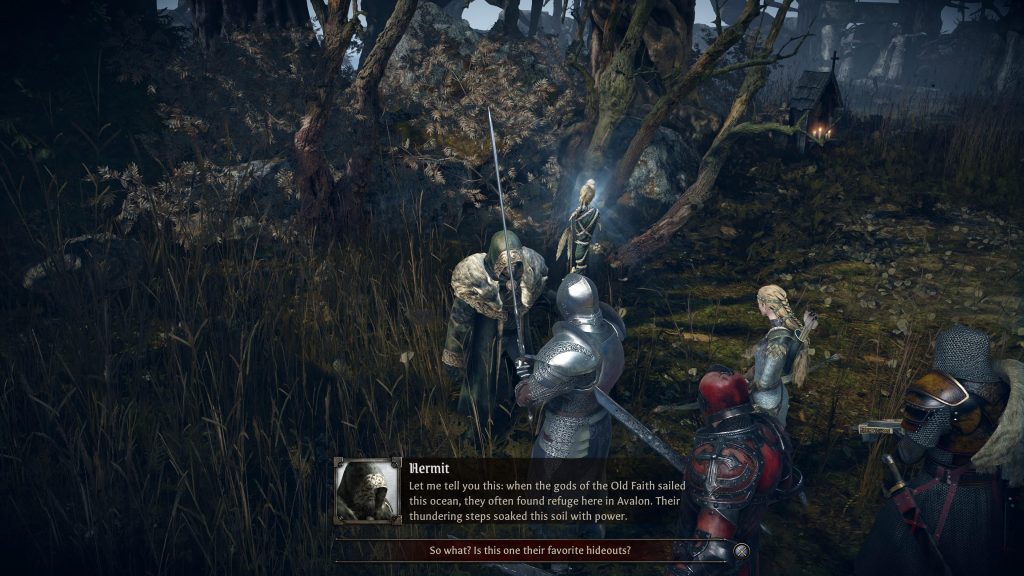 King Arthur: A Knight’s Tale is the game King’s Bounty II should have been. It’s better in every way. The story, the atmosphere, the management aspects and the combat are all on point here. Sure, it’s a grim-looking game set in a miserable, corrupted world but there’s something about it that kept us playing. There’s always something to do, even if you don’t fancy doing another mission right away. The only real downsides here are that the game is pretty repetitive and that while the interface works well enough, you do get the feeling that the game is better suited to being played on a PC. That said, if it ever comes out on the Switch, we can see ourselves picking it up for another playthrough in a year or two.
King Arthur: A Knight’s Tale is the game King’s Bounty II should have been. It’s better in every way. The story, the atmosphere, the management aspects and the combat are all on point here. Sure, it’s a grim-looking game set in a miserable, corrupted world but there’s something about it that kept us playing. There’s always something to do, even if you don’t fancy doing another mission right away. The only real downsides here are that the game is pretty repetitive and that while the interface works well enough, you do get the feeling that the game is better suited to being played on a PC. That said, if it ever comes out on the Switch, we can see ourselves picking it up for another playthrough in a year or two.
It’s not a game that’s going to appeal to everyone though. There’s not much in the way of eye candy here and it isn’t exactly set up for casual play but there’s something about A Knight’s Tale that speaks directly to what we want from a turn-based RPG and we found it very hard to put down.
+ We enjoyed all of the team and base management mechanics
+ A very solid story
+ Darkly atmospheric
- There's quite a bit to learn
- Visuals aren't amazing

